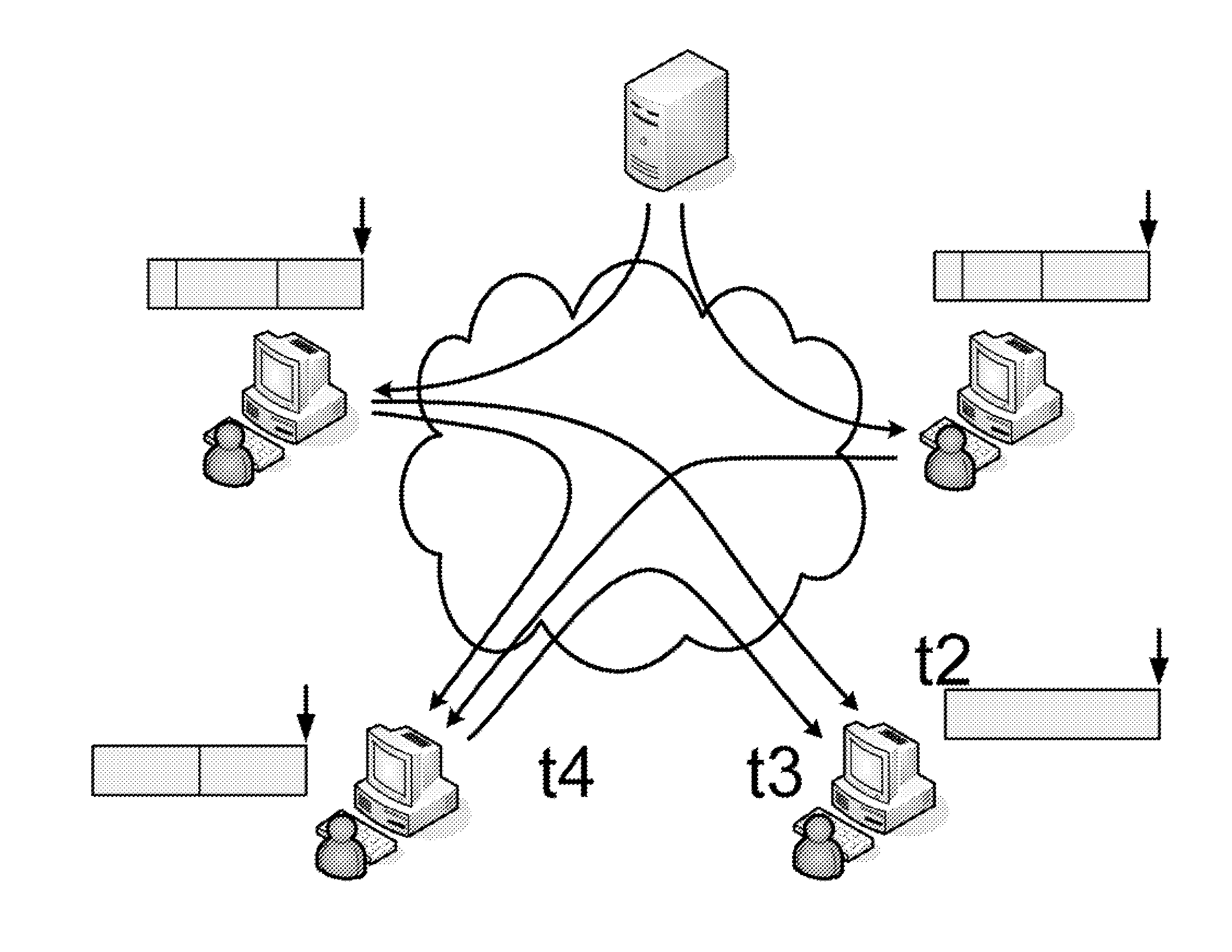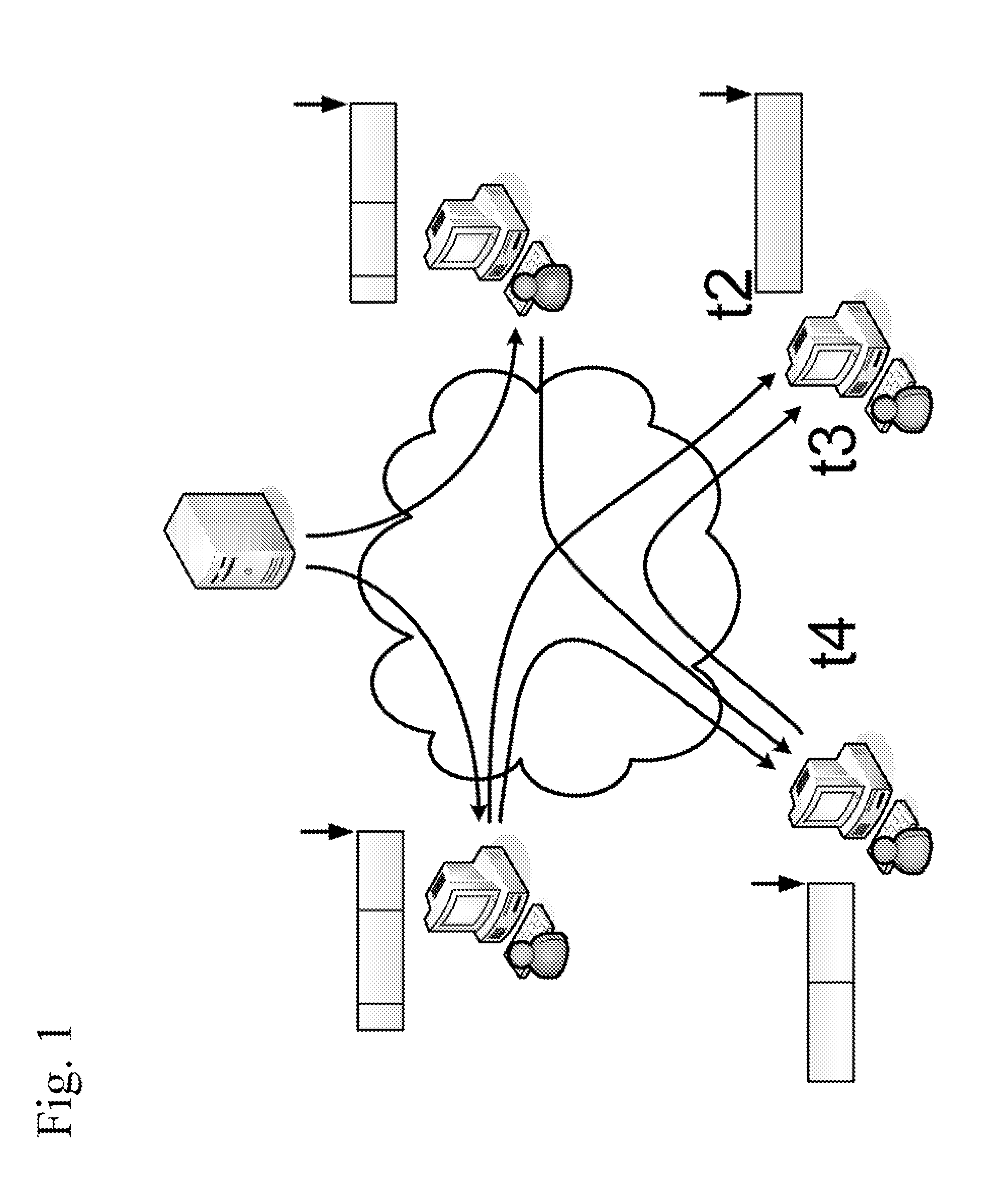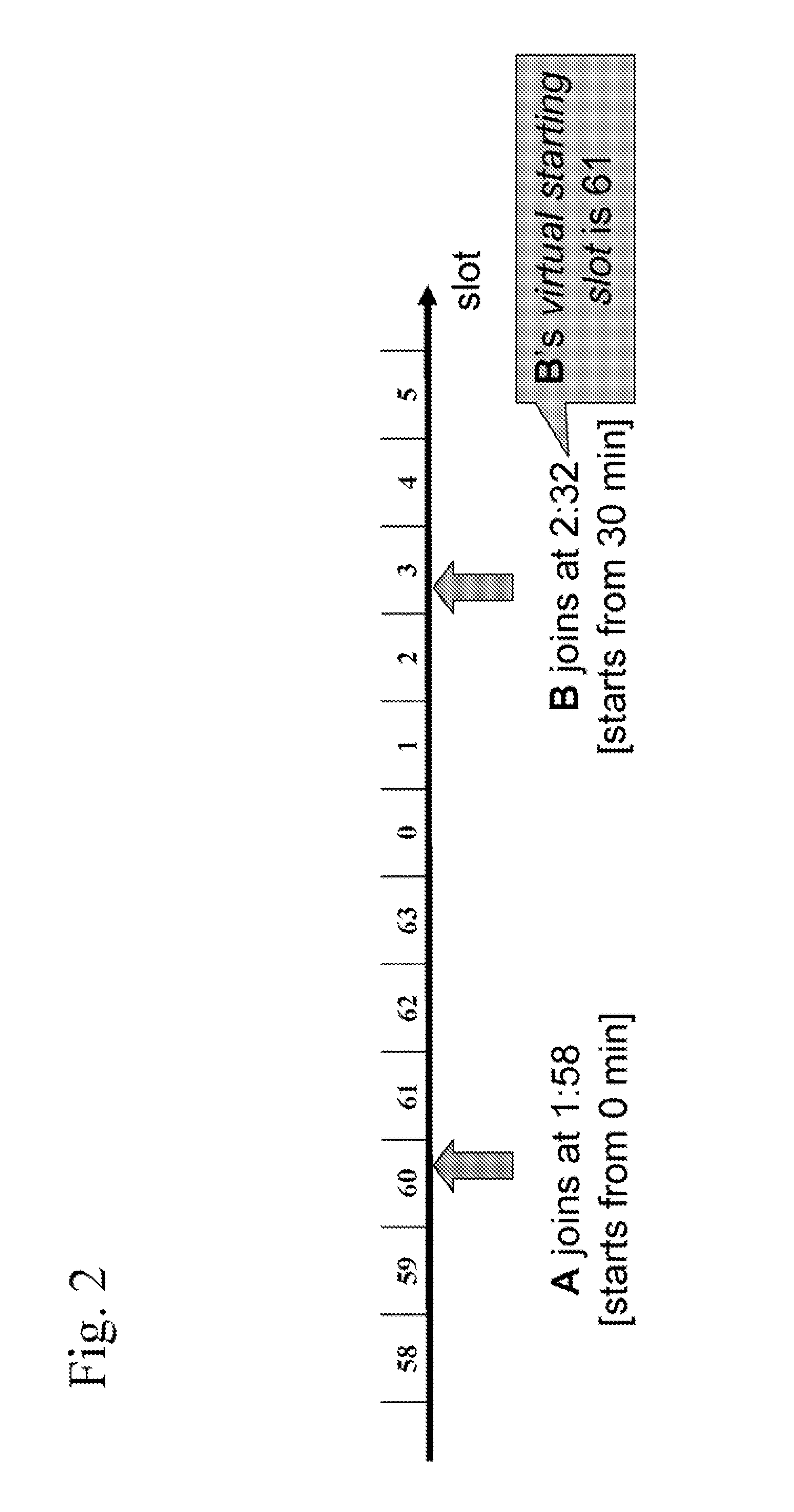Peer-to-Peer Interactive Media-on-Demand
a technology of interactive media and peer-to-peer, applied in the field of peer-to-peer interactive media on-demand, can solve the problems of not scaling to hundreds or even thousands of mod clients, difficulty in providing such services, and traditional server-client model of mods, so as to improve scaling characteristics, improve the probability of packet loss, and low server load
- Summary
- Abstract
- Description
- Claims
- Application Information
AI Technical Summary
Benefits of technology
Problems solved by technology
Method used
Image
Examples
Embodiment Construction
[0031] The numerous innovative teachings of the present application will be described with particular reference to the presently preferred embodiment (by way of example, and not of limitation).
[0032] The disclosure proposes a new scheme called PRIME (Peer-to-peeR Interactive MEdia-on-demand). PRIME utilizes the strong buffering capability of overlay nodes. A node here can be a communications device with networking capability or network device with video capability, including computer, video phone, mobile devices, etc. Each overlay node buffers the stream it just played back, for a period of time. The buffered data can then be streamed to another node. The buffering node is referred as the parent of the receiving node. In PRIME, multiple parents are used to serve a node. Each of the parents streams a non-overlapping portion of the media to the requesting node in parallel.
[0033] Using multiple parents has the following advantages: 1) The effect of parent departure or failure can be ...
PUM
 Login to View More
Login to View More Abstract
Description
Claims
Application Information
 Login to View More
Login to View More - R&D
- Intellectual Property
- Life Sciences
- Materials
- Tech Scout
- Unparalleled Data Quality
- Higher Quality Content
- 60% Fewer Hallucinations
Browse by: Latest US Patents, China's latest patents, Technical Efficacy Thesaurus, Application Domain, Technology Topic, Popular Technical Reports.
© 2025 PatSnap. All rights reserved.Legal|Privacy policy|Modern Slavery Act Transparency Statement|Sitemap|About US| Contact US: help@patsnap.com



